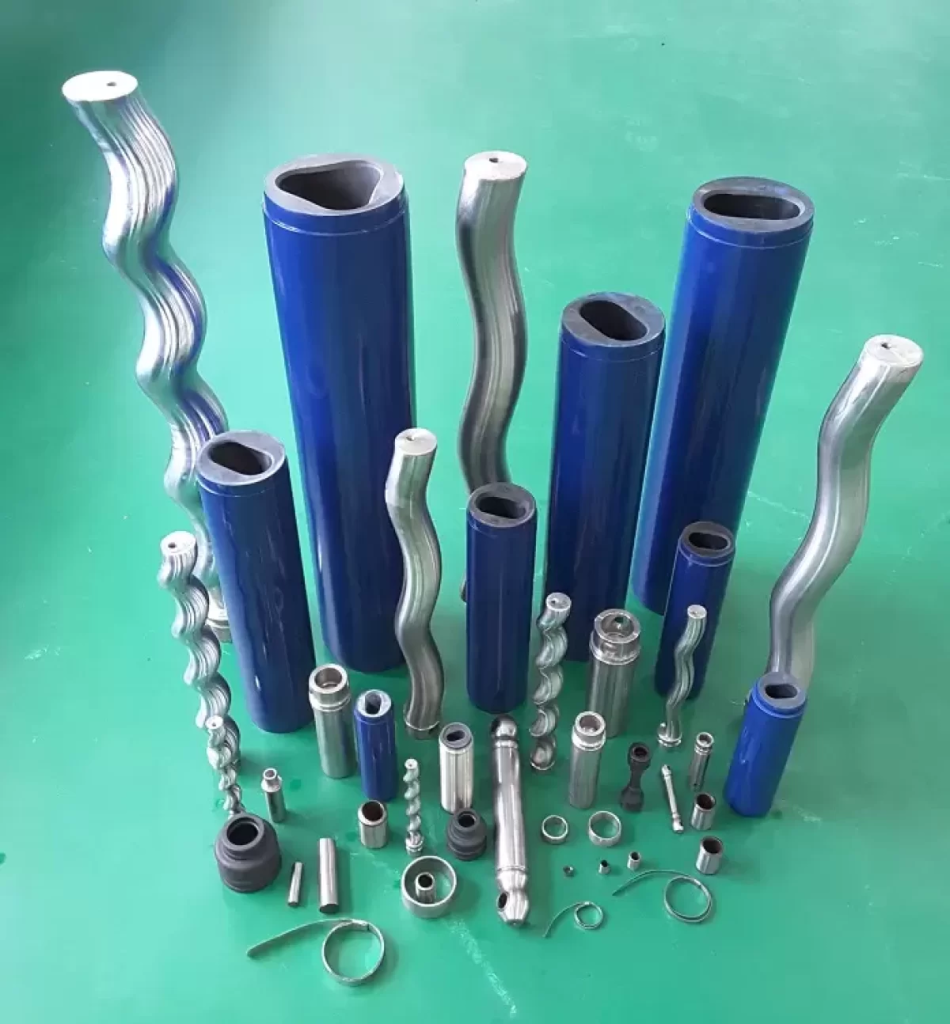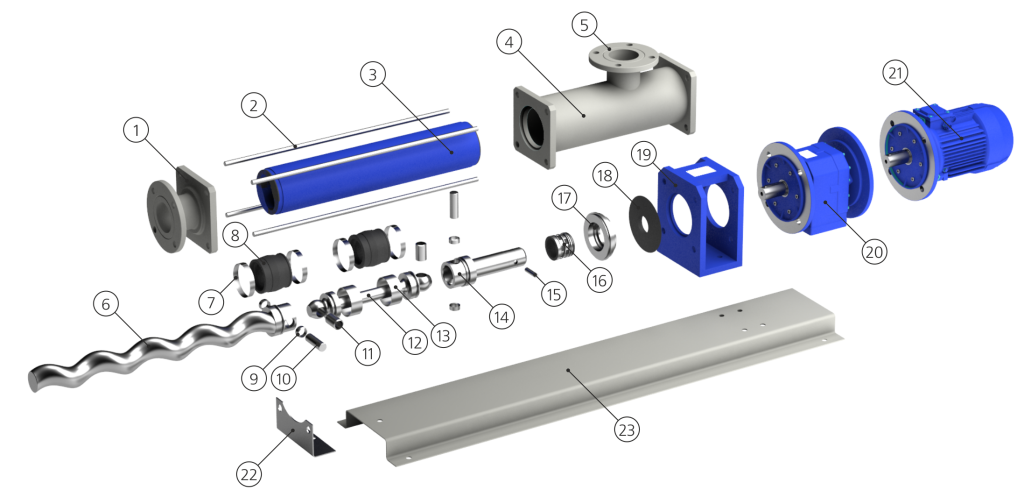Progressive cavity pumps are renowned for their ability to handle a variety of fluids, including viscous materials and those containing solids. To ensure these pumps operate efficiently, regular maintenance of their parts is essential. This guide outlines effective strategies for maintaining the various components of progressive cavity pumps, helping to prolong their lifespan and optimize performance.
Understanding Progressive Cavity Pumps
Before diving into maintenance, it’s crucial to understand the basic structure of a progressive cavity pump. These pumps consist of several key parts: the rotor, stator, drive shaft, bearings, discharge head, inlet suction, flow control valves, and wear plates. Each component plays a vital role in the pump’s overall functionality.

Importance of Maintenance
Regular maintenance of progressive cavity pump parts not only extends the life of the pump but also enhances its efficiency. Neglecting maintenance can lead to performance degradation, increased energy consumption, and unexpected failures. By following a structured maintenance plan, operators can minimize downtime and ensure consistent operation.
Key Parts of a Progressive Cavity Pump
Rotor
The rotor is a helical screw that moves the fluid through the pump. It is essential to inspect the rotor regularly for signs of wear or damage. A worn rotor can lead to reduced efficiency and increased energy consumption.
Stator
The stator, typically made of rubber or elastomer, encases the rotor. It is designed to maintain a tight seal around the rotor, preventing fluid leakage. Regular checks for cracks or signs of deterioration in the stator material are important, as these can significantly impact pump performance.

Drive Shaft
The drive shaft transmits power from the motor to the rotor. Ensuring the drive shaft is properly aligned and lubricated is essential for smooth operation. Misalignment can lead to increased wear and premature failure.
Bearings
Bearings support the rotor and drive shaft, allowing for smooth rotation. They should be inspected regularly for signs of wear and lubricated as necessary. Replacing worn bearings promptly can prevent more severe damage to the pump.
Discharge Head
The discharge head is where the fluid exits the pump. Keeping this area clean and free from obstructions is crucial for maintaining optimal flow rates. Inspecting the discharge fittings for leaks is also important to prevent fluid loss.
Inlet Suction
The inlet suction is where the fluid enters the pump. Regularly check for blockages and ensure that piping is free from debris. Maintaining a clear inlet is essential for preventing cavitation, which can damage the pump.

Flow Control Valves
Flow control valves regulate the fluid entering the pump. Regular inspection and cleaning of these valves ensure that they function correctly, helping to maintain optimal operating conditions.
Wear Plates
Wear plates protect the internal components from abrasive materials in the fluid. Regular inspections for wear are necessary, as damaged wear plates can lead to increased wear on other pump parts.
Maintenance Practices
Regular Inspections
Conducting routine inspections of each component is essential for early detection of potential issues. Look for signs of wear, leaks, or misalignment. Establishing a regular inspection schedule can help keep the pump in peak condition.
Lubrication
Proper lubrication is critical for maintaining the performance of bearings and the drive shaft. Use the manufacturer-recommended lubricants to ensure compatibility. Regularly check lubrication levels and add as needed to prevent excessive wear.
Cleaning
Keeping the pump clean is vital for optimal performance. Remove any debris or buildup from the exterior and interior components. Regular cleaning can prevent blockages and ensure smooth operation.
Replacement of Worn Parts
Identifying and replacing worn components before they fail is key to maintaining pump efficiency. Use original equipment manufacturer (OEM) parts to ensure the best fit and performance. This practice can prevent costly repairs and downtime.
Monitoring Performance
Keep track of the pump’s performance metrics, including flow rate and pressure. Sudden changes in these parameters can indicate underlying issues. Monitoring performance allows for timely intervention before problems escalate.

Troubleshooting Common Issues
Reduced Flow Rate
If the pump experiences a reduced flow rate, check for blockages in the inlet suction or discharge head. Inspect the rotor and stator for wear, as these components may need replacement.
Unusual Noises
Unusual noises during operation may indicate problems with the bearings or misalignment of the drive shaft. Conduct a thorough inspection to identify the source of the noise and address it promptly.
Leakage
Fluid leakage can occur due to worn seals or degraded stator material. Inspect the stator and discharge fittings for damage, and replace any compromised components to prevent further loss.
Conclusion
Maintaining progressive cavity pump parts is essential for ensuring optimal performance and longevity. By understanding each component’s role and implementing a structured maintenance plan, operators can avoid costly repairs and downtime. Regular inspections, proper lubrication, and timely replacement of worn parts will help keep progressive cavity pumps running smoothly, contributing to the efficiency of industrial processes. Investing time and resources into maintenance will yield significant benefits in reliability and operational efficiency.